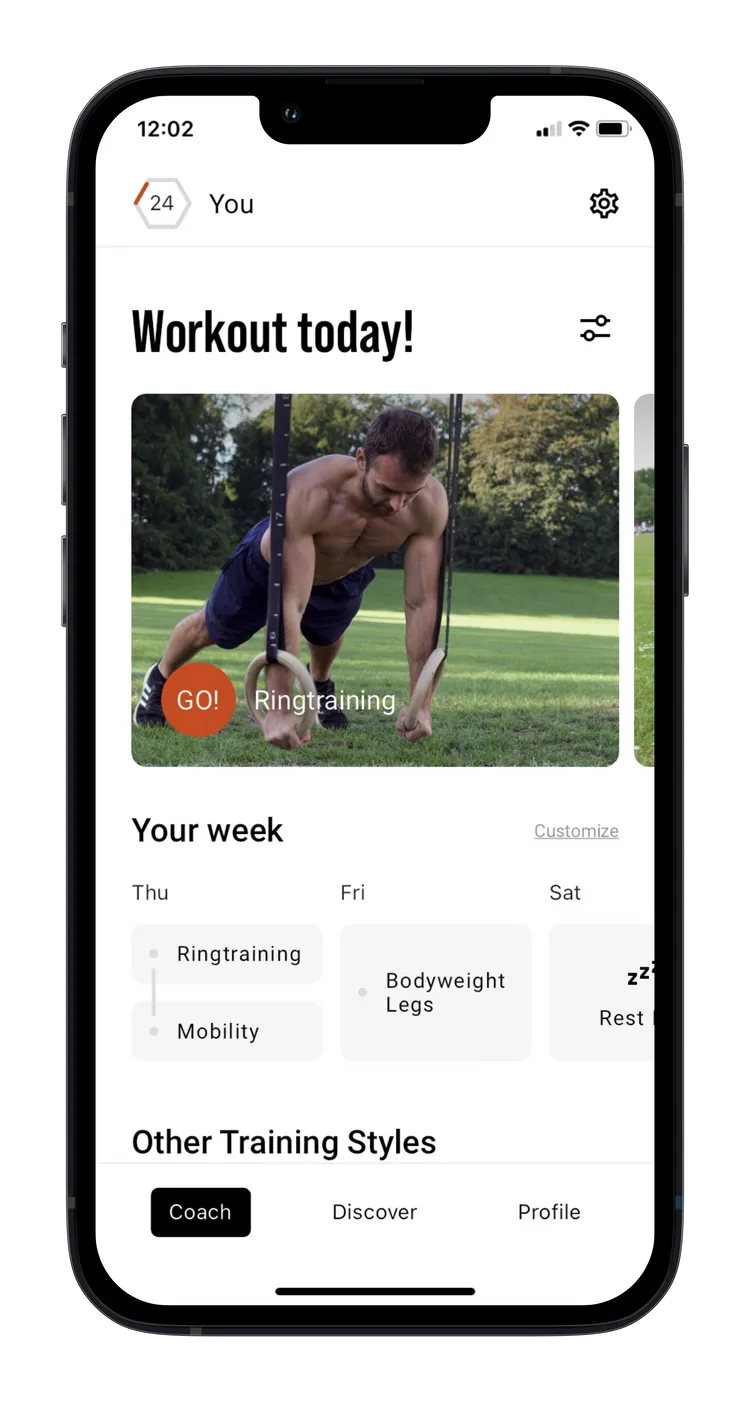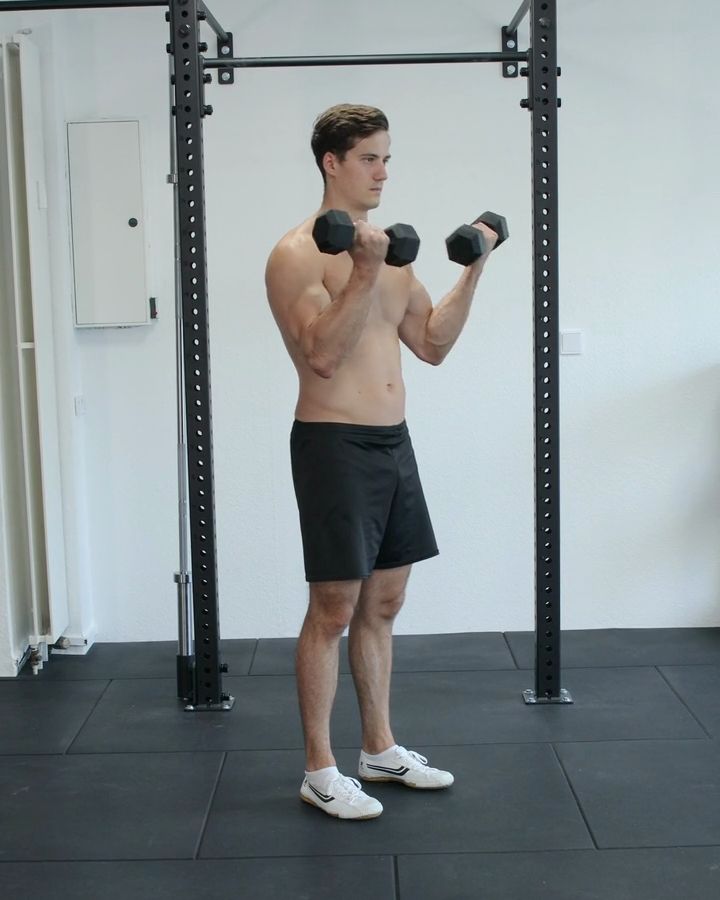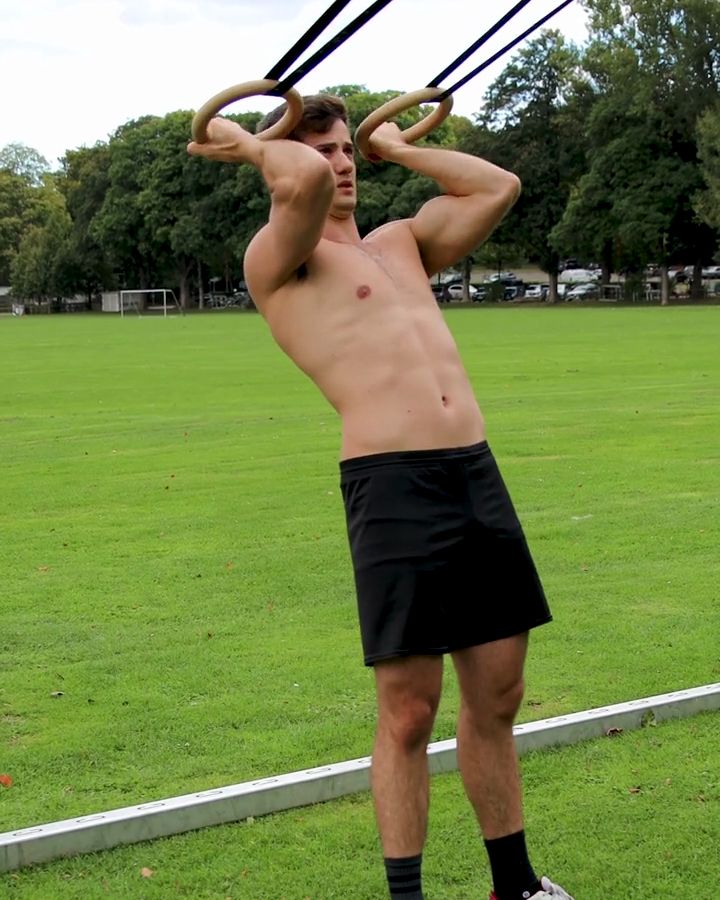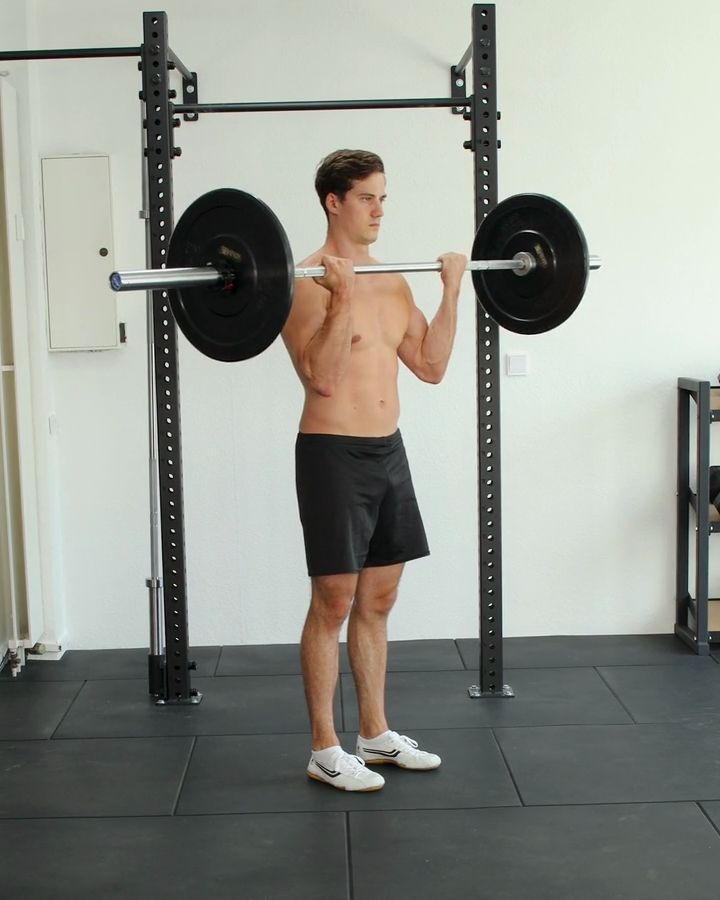Pelican Curls with gym rings
All bicep curls are excellent for building strong and large biceps, but few exercises offer a similar combination of chest, shoulder, and bicep stretch as the Pelican Curl. This exercise trains the biceps in an extremely stretched position, making it particularly effective for building strength and muscle mass.
The Pelican Curl is performed on rings. The intense stretch not only targets the biceps but also mobilizes the shoulder muscles.
It takes time to adapt to the strain of this exercise, especially in the shoulders and elbows. Start slowly with a higher body position or a less steep angle. Controlled movements are crucial to avoid injuries and get the most benefit from the exercise.
The Pelican Curl is ideal for advanced athletes looking to take their bicep training to the next level while also stretching their chest and shoulder muscles. Incorporate it into your routine to simultaneously increase strength and flexibility.
Necessary equipment
Pelican Curls with gym rings - the correct execution
- Start with rings at the chest
- Slowly stretch the elbows in a controlled manner
- Bring the arms behind the back
- When the arms are stretched to the maximum, take a step forward and return to the starting position
- Make sure you have a secure stance
- Start first with a very upright position to get to know the exercise
The exercise Pelican Curls is intended to be used as a hypertrophy exercise.
Which muscles are trained by Pelican Curls?










Primary trained muscles for Pelican Curls
Forearm - The forearm muscles are divided into flexors and extensors. The flexors bend your wrist, while the extensors straighten it.
Biceps - The biceps brachii muscle is located on the front of your upper arm. It helps you bend your arm at the elbow, rotate your palm upwards, and lift your arm forward.
Secondary trained muscles for Pelican Curls
Chest - The pectoralis major muscle is the large muscle on your chest. It helps you bring your arm towards your body and rotate it inward.
Front Delts - The front part of the deltoid muscle, also known as the anterior shoulder, is located at the front of the shoulder. It is primarily involved in the forward movement of the arm, such as lifting the arm forward. It also assists in the internal rotation of the arm. This muscle is engaged in activities that involve lifting objects in front of the body or pushing forward.
Similar exercises to Pelican Curls
Biceps Curls with dumbbells
Bicep curls are a classic bodybuilding exercise specifically designed to strengthen and shape the biceps muscles. While performing the exercise with a dumbbell allows for isolated training of each arm, bicep curls with a barbell offer the opportunity to use heavier weights. The exercise bicep curls on gymnastics rings provides an excellent alternative, especially when you're traveling and don't have access to a gym.
Biceps Curls with gym rings
Bicep curls on the gymnastics rings are an effective exercise to train the biceps specifically. The difficulty level depends on the body angle: the more upright you stand, the easier the exercise, as less body weight needs to be moved. In calisthenics, there are only a few exercises that isolate the biceps. Another popular variation is the Pelican Curls.
Biceps Curls with a barbell
Barbell biceps curls are a fundamental exercise in strength training, particularly effective for building and strengthening the biceps muscles. This variation allows you to train both arms simultaneously. The ability to use heavier weights compared to dumbbells enables more intense training stimuli, making the barbell biceps curl a popular choice for athletes looking to increase their upper arm size and strength. With alternative exercises like dumbbell biceps curls or biceps curls on gymnastic rings, similar training stimuli can be achieved.
This could also be interesting
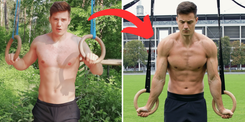
Calisthenics Body Transformation – How to Build a Strong, Lean, and Athletic Physique
Transform your body with Calisthenics! Build muscle, burn fat & achieve a shredded physique with bodyweight training. See real before & after results!
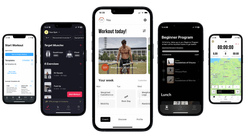
The Best Fitness Apps in 2025: Our Top 10 Recommendations
Don’t miss the best fitness apps of 2025: surprising favorites, free options, and perfect tools for your workouts. Find the ideal app today!
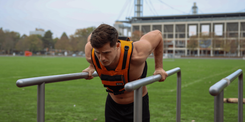
Complete Calisthenics Skills List – 40+ Exercises from Beginner to Pro
Which calisthenics skills should you learn first? And which ones will really help you progress? In this article, you’ll find a complete list of over 40 exercises – from the very basics to the toughest moves for professionals. Each exercise comes with instructions, so you can immediately integrate them into your training.
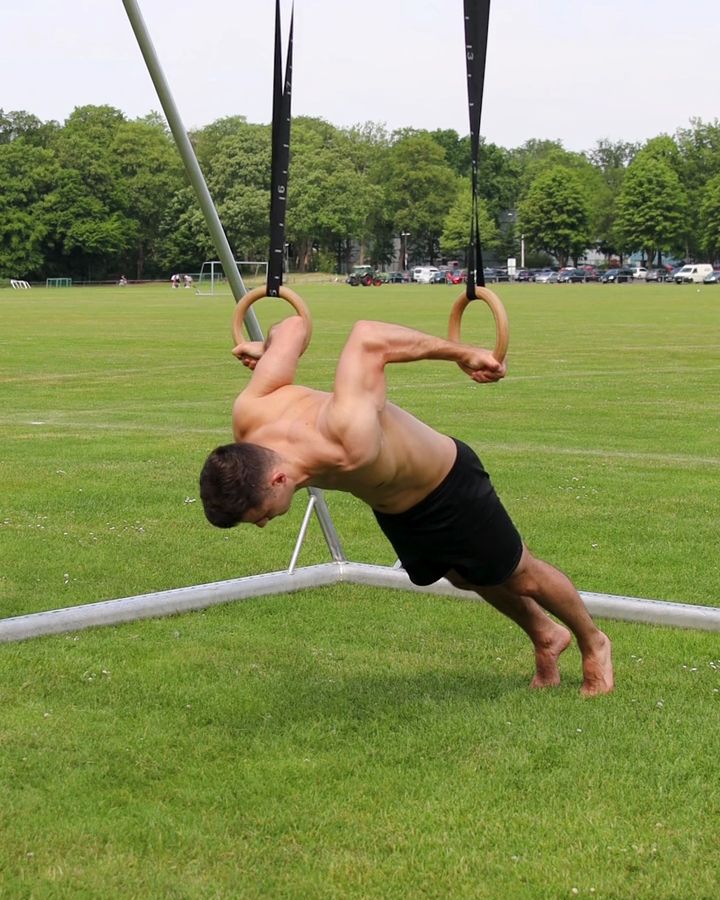
~e5724973d14549c23ea8a586b5736b36.png?alt=media)
